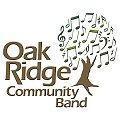-
Posts
1,767 -
Joined
-
Last visited
-
Days Won
17
Salemosophy last won the day on December 5 2020
Salemosophy had the most liked content!
About Salemosophy

- Birthday 09/26/1980
Profile Information
-
Gender
Male
Recent Profile Visitors
Salemosophy's Achievements
-
Thank you! I appreciate your feedback!
-
Salemosophy started following "Indivisible!"
-
A band director I've known for many years had always wanted to commission a piece for his band, and as he was preparing to retire, he approached me with this idea. This was in 2016 during the political upheaval of both parties and the eventual election. In 2020, I decided to send this to my publisher for release. Indivisible "fractures" the US national anthem, then puts the pieces back together again, more or less. The introduction is dark and haunting, takes off in a fast "angry" section, a slow lyrical section, and a celebratory finale of the final verse of the anthem. Each section corresponds to the lyrics of the anthem. "Oh say can you see..." in the intro, "As the rockets red glare, the bombs bursting in air" in the angry section, "By the dawn's early light..." in the slow lyrical section, and the unified final verse of the anthem in its conclusion. I enjoyed writing this and hope you enjoy "Indivisible!" Thanks for listening, and feel free to comment if the mood strikes you. Cheers!
-
Salemosophy started following Is this bad notation, considering that I have hemiolas going on? , What is Your Method? , Writing for wind ensemble for the first time, any advice? and 2 others
-
Do you have a method for writing melodies? Harmonic progressions? Rhythms? What is your method and what did you do to learn how to do it? For example, I developed a method for harmonizing melodies by studying scores and learning more about chord substitution. This method allows me to compose with more attention on linear ideas without too much need for horizontal analysis while I’m writing. Starting with a melody, I’ll compose a bass line that compliments the melody, then as I fill in the inner voices, I’ll consider primary chords only - tonic, subdominant, dominant - to fill out the voicing. From this, I’ll substitute chords for these primary chords (example, tonic substitutes include mediant and submediant chords and the borrowed varieties - bIII, bVI, etc.; subdominant substitutes include ii and vi and their borrowed varieties - bII, iv, bVI, VI, etc.; and dominant substitutes - v, vii^o , bVII, VII, etc.) Knowing tendency tones of the Major and minor modes helps - #4 and b7 for the major modes (Lydian and Mixolydian); b2 and raised 6th for the minor modes (Phrygian and Dorian). Also, the tendency chords for the modes are helpful to know as well (II - Lydian; bVII - Mixolydian; bII - Phrygian; IV in Minor - Dorian). Over time, I’ve become so used to doing this that I don’t really harmonize with the basic primary chords and easily find the chord substitute that works, simplifying my process so that I don’t feel like I’m having to do as much trial and error every time I sit down to harmonize a melodic idea. So that’s my method for harmonization. What’s your method, where did you learn it, and how could we learn to add it to our toolkit? Whatever your method, share it at your discretion. Let’s be better together!
-
Your guess is as good as mine. Measure 156 could also be a polychord. Cmin/Gb5. I do think we need to distinguish between harmonic content and melodic content as well. The harmony is clearly Gb Db with C as an accented non-chord tone on beat 1 of 155. This is a Lydian #4 tendency tone. We get it again in 157 in a C minor arpeggio. But the line isn’t necessarily “the harmony.” It just kind of maneuvers through the Gb Db power chord while bumping up against the pillars of the Gb harmonics.
-
There have already been 3 performances of the work, twice by my band (who really enjoy playing it) and a world premier by the band that commissioned the work (at least that I know about).
-
@PaperComposer, You should analyze the chord progression from 92-101 and figure out what I did there. I remember harmonizing it quickly and not really knowing what it would end up being. Looks like Gb, Bb/F, Gb, Bb/F, F7, and then we end up in Ab Major in 101, which is just delightful. “Hey, here’s this transition where I’m setting up Bb Major, but nope! Let’s go to Ab Major instead!” Composing this way is a lot more fun to me.
-
Ha! I don’t really even analyze as I go much anymore. So when you point out that I did something theoretical, I’m thinking, “I did? Ha! Cool.” I created a personal harmonization method to mitigate my over-reliance on theory to pick chords. Instead, I harmonize with basic functions and choose chords based on chord substitutions. It dramatically sped up my composition process since I don’t spend hours belaboring theory to lead me through a progression. Instead, I compose a melody and bass line, fill in basic I, IV, V chords of the key or mode, then substitute chords for those. Of course, I’ve been doing this for so long that now I just go straight to chord substitution as I harmonize. So that probably is a IV and bVI progression there. I haven’t analyzed the piece since I wrote it in 2017, though.
-
The E.T. Soundtrack holds a very special place in my heart, so I occasionally call back in appreciation of Williams’ influence on me as a composer. Those transitions are inspired by the E.T. soundtrack, a quite intentional nod. Windfall is another piece - you can find it here on YouTube - where I also call back to E.T. at the climax near the end. In fact, when I rehearsed this piece with my band, I constantly referred to these as the E.T. / Williams measures. True story. So, about that b9 interval in beat 4 of 156... Maybe the Gb bass note along with the Gb in woodwinds, mallets, etc is setting up a sort of resolution that G natural thwarts? If we look at these two measures, the linear material is building into the final conclusion of the work, so when the last beat of this line extends us suddenly to a b9, I think it fulfills the point of these two bars building to 157. I distinctly remember spending more time on these measures than other measures of the piece thinking, “Why does this seem to sound more effective when the line goes to G instead of Gb?” And I remember reading somewhere that the b9 interval is actually one of the most dissonant intervals in large orchestrated works (this is probably more debatable in theory, so don’t take my word as law on that), so b9 has its uses if you’re aware of its dissonant impact. I may have ultimately, and accidentally(?), discovered a moment where it actually works. Thanks for listening! I hope some of this is helpful in explaining things in a way that’s beneficial to you. If not, I’m happy to break it down more in discussion. Cheers!
-
1. Second Bassoon and Bari double each other frequently, and the Bassoon can be a good bass line supporting instrument. But I also recommend doubling 1-2 Trombones with 1-2 Bassoons as well in large textures. Bassoons are quite versatile. 2. Answer: - Double Bass (String Bass, as it’s also sometimes labeled) under the Tuba - Timpani - Vibraphone - Side Drum (Snare Drum or Tenor Drum?) - Bass Drum - CRASH Cymbal (not clash) 3. Yes.
- 2 replies
-
- band
- wind ensemble
-
(and 1 more)
Tagged with:
-
Salemosophy changed their profile photo
-
Greetings! I'm pleased to share a piece that was commissioned by a Community Band in my region and premiered in April 2018. "Lakeway Tribute" depicts the region of Morristown, TN, historic as the location of Davy Crockett's family tavern with rolling mountains and known locally as the community of Lakeway where homes line the Cherokee Reservoire, a lake community. So, I created a theme to represent the scenery, a theme to celebrate the festive spirit of the community, and to honor the memory of Davy Crockett's last stand at the Alamo. The form of the piece is mostly an ABCBA with transitions in between that seek to evoke a journey into the area. The piece is scheduled to be published in Spring 2021 and will go into the engraving process soon. You'll see in the score that, for the most part, everything is where it ought to be except the suspended cymbal. I didn't correct this for... reasons I won't get into here. But yes, I know it's out of place and it will be corrected anyway in the final product when my publisher engraves the score and parts. For now, please enjoy "Lakeway Tribute!"
-

Fantasy Audiobook Soundtrack
Salemosophy replied to Salemosophy's topic in Incidental Music and Soundtracks
Thank you for the feedback! I’ll go into the score and label them as you suggest. That’s a good idea! Should have thought to do that, but I get in a hurry to post sometimes and forget the obvious. The Lute is another character, a storyteller named Thom who carries a small harp around with him wherever he goes. I want it to sound more like a Lute, though the sound I get from Note Performer is actually a Mandolin... oh well. It’s not exactly the perfect sound I wanted, but it’ll have to do for now. Just try to imagine hearing softer attacks in the plucking of the strings, which a genuine lute sound would give me (something in between the stronger attack of the mandolin and the gentler attack of the harp string). I also thought about the Classical Guitar, but meh... I guess I’m torn. Seems like a classical guitar would be too much of an Old Western/Spanish vibe, like Desperado (Antonio Banderas) or something. I didn’t want to go there. The lute arpeggiation is representative, at least to me, of Thom telling his tales to the main protagonists of the book. He’s like a window (one of many) into the myth and lore of the world Jordan keeps building in the series, so the presence of the lute is significant in that sense. I have yet to finish the series (to even know what happens), but I’m just composing as I continue through the series as ideas strike me. -

To The Farthest Seas (Concert Band)
Salemosophy replied to Noah Brode's topic in Orchestral and Large Ensemble
Sure, nothing you wrote is rhythmically or melodically unplayable if it’s written in an appropriate range. I think you should get Finale, Sibelius, or Dorico, and buy Note Performer. You’ll be amazed by the sound difference. Send this piece to me in .mus or xml format. I can produce a higher quality audio for you that will give you a better sense of what the final product could sound like. -

To The Farthest Seas (Concert Band)
Salemosophy replied to Noah Brode's topic in Orchestral and Large Ensemble
Hi Noah! I've listened to this piece and the Baron von Munchausen piece you linked me to. I have some ideas for you to consider. First, the range of this piece is much better than the range of the Baron, though there are some spots where I think you should consider range issues in both pieces. Why is range so important here? Because range impacts band sound. It's the first thing that can make an otherwise great composition sound like a train wreck in live performance. So I'm going to give you some parameters to consider in revising your work for live performance. Here are the parameters I'll insist on, and you can go back and see where these should apply to both pieces. Also, I highly recommend you review these in a TRANSPOSED SCORE, not a Concert Pitch score. The reason is that transpositions often show you where the most comfortable range is for wind instruments. I'll be referring to TRANSPOSED SCORE ranges, not concert pitch. 1. Flutes - Bottom Space F to F one octave above the staff (yes, Flutes can reach "super C" above that, but these parameters are for comfort of the players) 2. Piccolo - Middle staff line Bb to F one octave above the staff (yes, they can play lower and higher, but unless you know what you're doing, don't) 3. Oboe - Bottom Space F to Bb above the staff 4. Bassoon - Bb below the staff to F above the staff - all comfortable, very wide range 5. 1st Clarinet - G below the staff to C above the staff (anything above that C requires alternate fingerings some amateur players might not know) 6. 2nd Clarinet - G below the staff to G on top of the staff (less skilled players struggle with embouchure issues here) 7. 3rd Clarinet - G below the staff (they'll have to push the air for it, but they can do it) to G (they can reach it, though you may not want to tempt fate too much here) 8. Bass Clarinet - Low D one octave below the staff to second space A in the staff (if you go above this, it better be to feature a soloist) 9. 1st-2nd Alto Sax - Bottom space D up to D above the staff (all safe), though you can take your first alto to C# and C below the staff, as well as up to A above that high D if they're good. 10. Tenor Sax - Bottom space D up to G above the staff (yes, they can go lower and higher, but this is a comfortable range) 11. Bari Sax - C below the staff up to G above the staff (most Bari Saxes can go lower with extra keys, depending on how old the instrument is, but these notes are all available on every Bari.) 12. 1st Trumpet - G below the staff up to G on top of the staff (every first trumpet should have this range, guaranteed, A up to E above it is rare) 13. 2nd Trumpet - A below the staff up to top space E in the staff (I would avoid top space E as much as possible and stay under it) 14. 3rd Trumpet - C below the staff up to C in the staff (consider these are usually your newest, least experienced players in a band, so set them up for success since they pretty much have to know the concert Bb scale). 15. Horn - C below the staff to top line F on the staff (again, you can take them up to G or A, especially if you set them up with a horn "rip" or something, but they'll nail F every time as a high note) 16. 1st Trombone - F below the staff to F above the staff (this is your strongest set of players, virtuosic players can reach the Bb above that high F) 17. 2nd Trombone - F below the staff to D above the staff (this is your weakest set of players) 18. 3rd Trombone - Bb below the staff to D above the staff (they're stronger than 2nd trombone players but I wouldn't tempt fate) 19. Euphonium - Bottom line Bb in the staff to Bb above the staff (all comfortable) and up to F above that for a good section 20. Tuba - F one octave below the staff to top line F in the staff (good players can reach the Bb on top of the staff, anything above that is virtuosic) You'll find that a lot of your ranges for your 2nd and 3rd parts have a huge impact on the attainability of your pieces. Your horn parts in Baron are insane - no offense, they just are, and you need to spend a majority of your time on these. I have a good band with strong representation in every section, and they would harass me over the range issues in that piece if I programmed it. I say this to prepare you for putting one of these pieces in front of a band. You want your players to look at their parts and not experience stress or concern about what is expected of them as players - especially volunteers who enjoy playing comfortably and are willing to occasionally exert the effort to reach pitches outside of their comfort level on rare occasions. Baron is too demanding in terms of range for most bands, and the band sound will suffer as a result, meaning it wouldn't be programmed by as many groups. There are moments where you stretch the range in this piece as well, though not nearly as egregiously as in Baron. The lesson here is that just because an orchestration book or website says an instrument can reach a particular pitch doesn't mean every performer on that instrument has the skillset to reach it. Some players will never reach a virtuosic level of performance on their instrument. Some players will never even achieve a full range of the instrument either. There is a degree of compromise here that, if you're smart about it, will make your music more attainable for your band. The first priority, before your enjoyment or that of the audience, is that of the performer. That's always going to be a very important consideration of the band director as well. As far as the compositions themselves, I thoroughly enjoyed both and appreciate the ideas you're using and developing. My one hangup is how often you cadence with a fermata or long tone between sections. There are even times when you begin to fluidly transition into a new section, THEN you cadence on a fermata or long tone, which disrupts the momentum of the piece and gives us this "stop and start" sensation. Maybe less fermata / long-tone breaks and more fluid transitioning from one section to the next would help. I hope my feedback helps you. Cheers! -
I’ve conducted orchestra and band pieces that are notated exactly like this. I don’t see the problem that this person has with the way you’re notating this music. As far as I’m concerned, you’d be right to question their opinion on this matter. Show them a score of the notation you’re basing this fragment on (from Holst or whoever) and say with confidence that you’re doing this correctly based on how other composers execute this in notation. Now, if it’s a composition professor making this an issue, you may want to tread lightly. It’s not worth winning a battle if you lose a war, or so the saying goes. Be respectful, but you can stand up for yourself on this one a bit, I can assure you.
-
Hi Noah! Thank you for the questions! Grade level is determined by state band associations. Each state’s band association will basically adopt a model based on one of the major states like Texas or California. I would reach out to a local band director at a school and let them know you’re looking for information on music difficulty, and any documentation they can give you for your own use as a composer would be helpful. Joining a GOOD community band would be a great way to position yourself to get your music read, programmed, and maybe even performed. I recommend Note Performer for the best audio quality. That’s what we’re using for audio samples now at GPG, and it’s amazing! Works with Finale, Sibelius, and Dorico. Getting published isn’t the highest priority. Getting your music in front of players is. You’ll gain more from this than publishing. I’ll listen to your works and comment when I have more time. Thanks again for your questions!


.thumb.png.8b5b433a341551e913a34392660bc95b.png)










